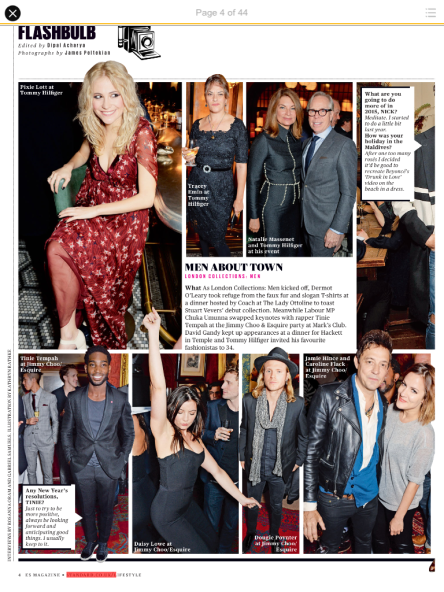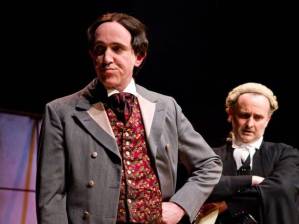For six months now, under the employ of the Evening Standard Magazine, I have had the good fortune to be able to go to an amazing array of celebrity parties and VIP events, to report on them for the magazine’s ‘Flashbulb’ section.
My friends turn a bit green when I tell them what events I’ve been able to go to – the BRITS, the BAFTAS, the Oliviers, countless starry fashion show dinners, balls, premieres and intimate members club parties – but not as green as when I tell them which stars I’ve been able to talk to.
Over free champagne and canapes and on the red carpet, I’ve interviewed Angelina Jolie, Uma Thurman, Colin Firth, Ed Sheeran, Taylor Swift, Kate Hudson, Anna Kendrick, David Gandy, Tinie Tempah, Kim Cattrall – and many, many more on my travels. It’s been a wonderful experience – and has done wonders for my confidence as a journalist.
Sound like a dream job to you? It pretty much is, but it’s not at all impossible to acquire. ES are not the only publication to offer flexible diary work – the Mail on Sunday and the Times are two other notable examples that run a similar operation.
Meanwhile, here are a few tips for success I have picked up on what feels like countless party nights:
1). BE BOLD
Your job is going to be to go up to famous people you have only seen before in magazines, in movies and on the TV, completely off the cuff – and it’s a pretty intimidating thing to do. My first ever interviewee was Kylie Minogue at the Claridges Christmas Tree unveiling, and I was terrified, having to tap her on the shoulder – thankfully she was very accommodating. But just take a deep breath and remember they’re just people despite all the gloss and glamour – most of the time, they’ll be more than happy to answer a couple of questions. You have to frame it innocently though – ‘I’m just going around asking people questions about Christmas/summer/the election…’ – or some might think you’ll be asking prying questions about their private lives.
2) PICK YOUR SPOT
Usually the rule is, the later in the night, the better the chance of success. Spend the early part of the evening just observing, walking around the room and seeing who has shown up. Another bonus is that, later on the night, people will have knocked back a few drinks by that point and are likely to be more warm to you (as well as potentially giving funnier answers). Be concise with questioning , don’t take up more than five minutes of their time, and never interrupt them from an important-looking conversation – the best time to catch someone is as they’re moving from room to room. Be polite and friendly, and wait your turn. All pretty obvious stuff. Another major tip — don’t use a dictaphone, use the voice recorder on your phone, it’s much less intimidating if you’re waving it around casually.
3) MAKE FRIENDS WITH P.R.s
P.R.s organise events, and they’re looking to give you the best time possible on a night (mainly for their own publicity), so make friends with them. They’ll get you drinks, they’ll sometimes even offer to introduce you to a celebrity and often have their ear to the ground when it comes to picking up party gossip. As soon as you get to a party, ask for the PR by name who sent you an email about the event and take it from there – apart from anything, they are invariably a fun person to talk to if you’ve gone to this event solo. Plus, as an added bonus, if you really hit it off, they’ll send you invitations for other events they’re organizing in the future – and will always keep you in the loop.
4) DO YOUR RESEARCH
You’ve been sent the invitation by email, and recognise the names of loads of stars on the list. You get to the party, and can’t recognise one of them by face – a bit of a nightmare scenario. The key is in the research: on the tube on your way, Google all of the names on the list so you know precisely what your targets for the evening look like (they might have a drastic new hair style, plastic surgery, whatever). Furthermore, get on Google News and make sure you know what the ‘big hitter’ VIPs in attendance have been up to recently – are they moving to London? Are they making a new film or album? What’s going on in their love life? The more background work you do, the better your final copy will turn out – simple as that.
5) MIND THE DETAILS
A lot of diary work, for ES Magazine included, requires a bit of attention to the details of what happened at an event – who gave a speech and what did they say, what food and drink was there, who turned up and who was too busy, who was chatting and what rumours were being passed around? All this stuff is just as important to your job as the interviews with famous people, so make notes of all of them. If you don’t, your copy probably won’t make the cut, as your editor will have to do all the legwork after – so keep an eye on it.
And finally – GOOD LUCK! And make the most of every night.


















